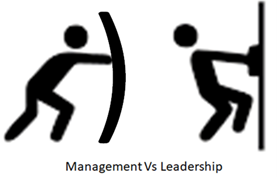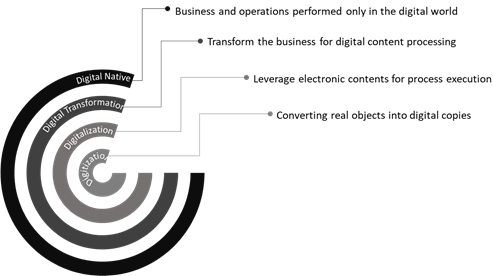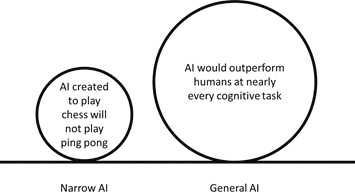December 19, 2019
The century-old contemporary enterprise business model is factored and refactored to achieve customer satisfaction and revenue generation. The enterprise attempts to understand the market demands, define the strategy, build products, offer services, and manage business operations by running integrated business processes. The terms management and leadership are lumped together to drive the enterprise but often regarded as one and the same. However, both have come to represent different purposes for the enterprise.

The management focuses on planning, organizing, and execution. Managers can be technical or non-technical, but they ensure performance efficiency. The leaders are like a commander-in-chief in the military, challenging and predicting the circumstances to make timely critical decisions, thereby opening the door for innovations and transformations to achieve short and long-term goals. This history or chain of events can be backtracked from 1911 when Frederick Taylor published his book The Principles of Scientific Management.
History of Digital Transformation
The first digitalization theory for business was explained by Gottfried Wilhelm von Leibniz in 1703. He used a concept called base-2 numerical system (0s and 1s). During 1940, three scholars George Boole, Claude Shannon, and George Stibitz further developed and complemented the advanced version for enterprises who wanted an innovative business model. Since then, enterprises kept evolving by digitizing their business operations and transcending into digitalization, digital transformation, and a digital-native and digital-first approach, among others, by creating new innovative business models and execution protocols using emerging technologies.

Now we are in the era of Industry 4.0. We have come a long way since enterprises used technologies from Altair 8800 (a microcomputer designed in 1974) to now leveraging quantum computing (trillions of logic operations per second), 5G (maximum speeds of 940 Mbps per second), and more bringing a new breed of hyper-connected solutions to current and new business models. Instead of irrationally digitalizing existing business operations, digital transformation is the act of transforming business models to deliver exceptional customer service using improved digital technologies.
In the digital enterprise journey, enterprises extensively leverage modern digital technologies to achieve success. Business leaders define the digital strategy, business drives requirements, IT develops software applications or buys software and hardware products to meet the business demand and deploy those into the infrastructure. The information security team makes sure that business operations are compliant with the enterprise guidelines and are risk-free. The business uses software systems, users interact with software applications to perform business operations either manually or in an automated fashion, and finally, the IT systems leverage operational data to produce the desired results.
This entire cycle is colossal through either the waterfall or even the agile methodology because business provides new requirements to IT continuously and then waits for the new solution. IT defines/redefines the system architecture and builds or modifies systems for the given requirement. There are two crucial parts of the entire digital transformation journey:
- Process qualification, definition, and redefinition
- Creation of highly effective and rational IT systems
Who bridges the gap?
The most decorated people are IT architects and, in some cases, the CTOs, who takes ownership and informs the business about what's transpiring in IT space. These people have the right understanding to act as an intermediary between business and technology. This is crucial in the transformation journey that involves the strategic leaders.
Under prevailing circumstances, even after tremendous business and transformational experience of digital technologies, should enterprise leaders invest special attention into their artificial intelligence (AI) strategy?
A hypothetical and factual view of artificial intelligence
How would an enterprise typically answer the following questions?
- How important is it for your enterprise to deliver a better customer experience?
Yes! This is our number one priority.
- How important is it for your enterprise to invest and adopt AI?
Yes! We are passionate about AI. We are in our digital transformation journey. We need to bring advanced automation through AI to beat the competition. But AI is not in our mainstream processes right now. However, we feel we can consider AI for a few areas where we have control because we have other business priorities to take care of.
Adopting AI as a digital strategy is not a quick fix that will solve problems overnight. For enterprises with potentials for transformation, AI is one of the intelligible solutions, yet some common misconceptions still exist:
- We are focusing on cutting down on costs, so we should or will consider AI later.
- Our existing automation is serving well, so we may not need AI.
- We have AI in some areas, and it is not working for us.
- We are trying AI in a few areas as a proof of concept.
- AI, ML, DL, and others are the same thing, so we do not have time to explore all options.
- Our business model is unique and complex, so AI will not bring us any value.
- Our budgets for IT and business are separate, and they have different priorities to follow.
- Our business stakeholders do not have confidence in AI.
- We do not want AI to displace our skilled employee’s job.
- AI is expensive and therefore, we cannot achieve a higher profit margin.
- Our competitors could not bring any value though AI, so we don’t want to waste our effort.
AI and its Strategy - Distinct and Inevitable
The beginnings of modern AI were first framed by a philosopher, John McCarthy in 1956. His philosophical concept described AI as human thinking as a symbolic system. This attempt was further developed by several smart minds including MIT cognitive scientist Marvin Minsky. But now the term AI is commonly defined as a computer program or physical robot designed to imitate human intelligence to perform a limited human task. What we have today is Narrow AI that can handle a limited task at the same time. However, the industry is marching towards General AI for a broader purpose.

Achieving an AI breakthrough was chaotic, due to various criticisms. The dark ages for AI were between 1974–80. During 1980, when the British government started funding it again to compete with Japanese technology, the world started focusing on AI and its strategy.
Today, AI focuses on a new wave of digital strategy to deliver digital supremacy. The AI strategy can be formally expressed as the foundation of AI solution creation and software delivery. With the magic words customer-first and technology-next, the journey starts from identifying the potential domains to gather or create data and converting the unstructured data/information/knowledge, into AI-ready data, which is a crucial activity. Unlike other strategies, before considering the system architecture and design patterns, data is the vital element that stands first.
A digital transformation solution will appreciate the values of big data or more data. However, for AI projects, good data or AI-ready data is paramount.
The building blocks for successful AI strategy are as follows:
- Identifying the necessity of AI
- Selecting appropriate AI solutions
- Qualifying the AI products and platforms
- Selecting the AI development tools
- Building the AI teams for AI development, integration, data processing, and model training and testing
- Identifying the methodologies to translate raw data into AI-ready data
- Selecting the AI models and algorithms
- Qualifying the use cases
- Restructuring the organization for AI development and implementation
- Preparing for the relevant ethical changes
- Preparing for the new types of business data generation and system integrations
- Planning an ideal AI budget
- Defining the meaningful milestones for AI projects
- Selecting the experienced AI vendors
- Redefining the information security policies
- Preparing the proper roadmap for AI projects
For the AI solution development cycle, IT takes the responsibilities to build the AI systems, but to make it successful, data in all formats across the enterprise must be collected, cleaned, labeled, and mapped to make more appropriate and valuable for the AI models. If this fails, then the AI strategy will fail. The cycle starts with data discovery followed by data munging, AI model engineering, AI model development, and AI model training and testing.

Who is the Bigwig?
This is a convoluted question. Unlike the software development process, AI development needs a data-first mindset. The people who drive the AI strategy should stand head and shoulders above the rest, in understanding the corporate need, the various AI models, and their development environments.
There are no matured or standardized AI development methodologies or best practices to implement and follow. For the most part, people and technologies are new and immature in this domain. For instance, IT architects are mostly experts in architecting the systems, then pre-selecting and preparing data for AI solutions. Data scientists are only experts in processing various datasets and in extracting knowledge/insights from structured and unstructured formats rather than understanding the nuances of AI technologies.
The owners who hold the responsibility should be capable to set the right level of business expectation by educating all those involved in upcoming AI projects, outputs, outcomes, and impacts. They should be digital native and capable to explain why AI is not the one-stop solution for enterprise-wide business problems.
Data is the Foundation
Using technologies, the AI models can be built to become an incredible solution with computational thinking power. Again, the effectiveness begins with data. Meaningful data has the power to turn raw AI models into a stunning solution for business. The digital-native people who own the journey should be capable enough to explain why the AI solutions will take more time to produce the desired results as opposed to traditional software application. AI solutions are not like traditional computer software where they can download the ‘.exe’ executable file to double click and start using a preconfigured software program, such as, say, Microsoft Office. Primarily, business needs to understand that data is the foundation and the present datasets are not enough for AI to meet the expected results. Finally, the transformation will cost them a little but it will also produce more meaningful data from scalar to tensor.

Taking Everything into Account
As the team becomes familiar with the selected AI models and development processes, both business and IT can explore advanced analytical systems to figure out a way to generate more meaningful data for their specific AI solutions.
There are other success factors to be considered by the enterprise trying the latest AI solution:
- AI will become fragile without the proper collaboration between business and IT, and lack of data preparation from them.
- The entire initiative will fail fast, if the enterprise does too many pilots and proofs of concept as standalone AI projects without the strategic vision.
- There should be room for mistakes and uncertainty because if the underlying data changes either by adding new data or modifying existing data, then the AI model behavior will change and will not produce the expected outcome.
- Any change in one place can change things everywhere.
- Even a small amount of data changes the entire AI system. So it needs to be modified and retained.
- Unlike traditional software application development, AI system development is immature due to programming software, platforms, and design patterns.
- Team, skills, and development process are also immature. These needs to be carefully considered while defining AI strategy.
- AI will not produce overnight impact.
- New role should be defined to speak AI to both IT and business for securing AI and its data.

Senthil Kumar
He is passionate and keen to remain knowledgeable about IT infrastructure, Artificial Intelligence (AI), Automation, Neural nets, Machine Learning (ML), Natural Language Processing (NLP), Image Processing, Client Computing, Blockchain, and Public/Private Clouds. His research interest circles around stack solutions to enterprise problems.
Kumar has a MS in Software Engineering (SE) along with several technical certifications like MIT’s Artificial Intelligence (AI), Machine Learning (ML- Information Classification), Service Oriented Architecture (SOA), Unified Modeling Language (UML), Enterprise Java Beans (EJB), Cloud and Blockchain, etc.









